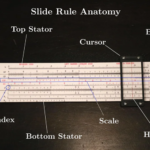As technology advances, new parameters and measures are necessary while some older ones fade in importance.
Engineering depends on metrology, measurements, metrics, and figures of merit (FOM). These allow designers to quantify performance and compare it to previous implementations and alternative designs. These factors are critical to the many essential quantitative assessments, as well as the “gut feel” and experience, which also play a role.
Metrology begins with the International System of Units (abbreviated as SI, from the French name Système international) whose members voted a few years ago to redefine all fundamental units based on just seven physical constants, as shown on a convenient wallet-size card (Figure 1).

The advantage of using these seven non-intuitive fundamental constants is that they are locally reproducible (at considerable cost, of course) without the need to go back to a primary physical standard (the story of the nearly invisible but still significant changes in the master kilogram over the years is quite revealing and scary).
Nonetheless, as vital as these seven units are, they are not what is needed for practical measurements; instead, we need units such as the second, volt, or ampere with their definitions derived from these constants. Some measures and metrics are new, some are small yet long-lasting, while others fade away.
For example, in the early and middle of the 20th century, the “erlang” was one of the most important measures for communications traffic. It was hard to find anything written about telephony-system performance without seeing that term.
What’s an erlang? No, this is not the Erlang programming language used to build massively scalable soft real-time systems with requirements on high availability and is used in telecom, banking, e-commerce, computer telephony, and instant messaging systems. The communications erlang is a dimensionless unit of analog telephony traffic. One erlang is the equivalent of one call (including call attempts and holding time) in a specific channel for 3600 seconds in an hour. The CCITT designated the erlang as the international unit of telephone traffic in 1946 in honor of Anger Krarup Erlang, a Danish mathematician and engineer who did important early work in traffic engineering and queuing theory.
Wait a minute: call attempts, holding time—what are those, anyway? The entire erlang concept is related to “circuit-switched” landline-based analog telephony, where a tangible physical circuit is dedicated to the call in progress. A single circuit can be used for 60 minutes of one hour, and the full use of that capacity constitutes one erlang.
The next part of this blog discusses older metrics and figures of merit and looks at some newer ones.
Related EE World Content
- High-speed data challenges physical-layer optics
- What metrics can bioelectrical impedance analysis provide?
- What metrics can bioelectrical impedance analysis provide? Pt 2.
- First go for accuracy, then precision
- ADCs: sufficient sampling at Nyquist’s rate
References
- NIST, “For All Times, For All Peoples: How Replacing the Kilogram Empowers Industry”
- NIST, “A Turning Point for Humanity: Redefining the World’s Measurement System”
- NIST, “Toward the SI System Based on Fundamental Constants: Weighing the Electron”
- NIST, “Universe’s Constants Now Known with Sufficient Certainty to Completely Redefine the International System of Units”
- Erlang Ecosystem Foundation, “Erlang programming language”
- Harry Nyquist, “Certain Topics in Telegraph Transmission Theory”
- Claude Shannon, “A Mathematical Theory of Communication”
- Microwave Journal, “mmWave Will Be the Critical 5G Link”
- Mobile Experts, “5G – Is it Economically Viable?”
- Mobile Experts, “When does Mobile Traffic Density force the operator to use small cells?







Leave a Reply
You must be logged in to post a comment.